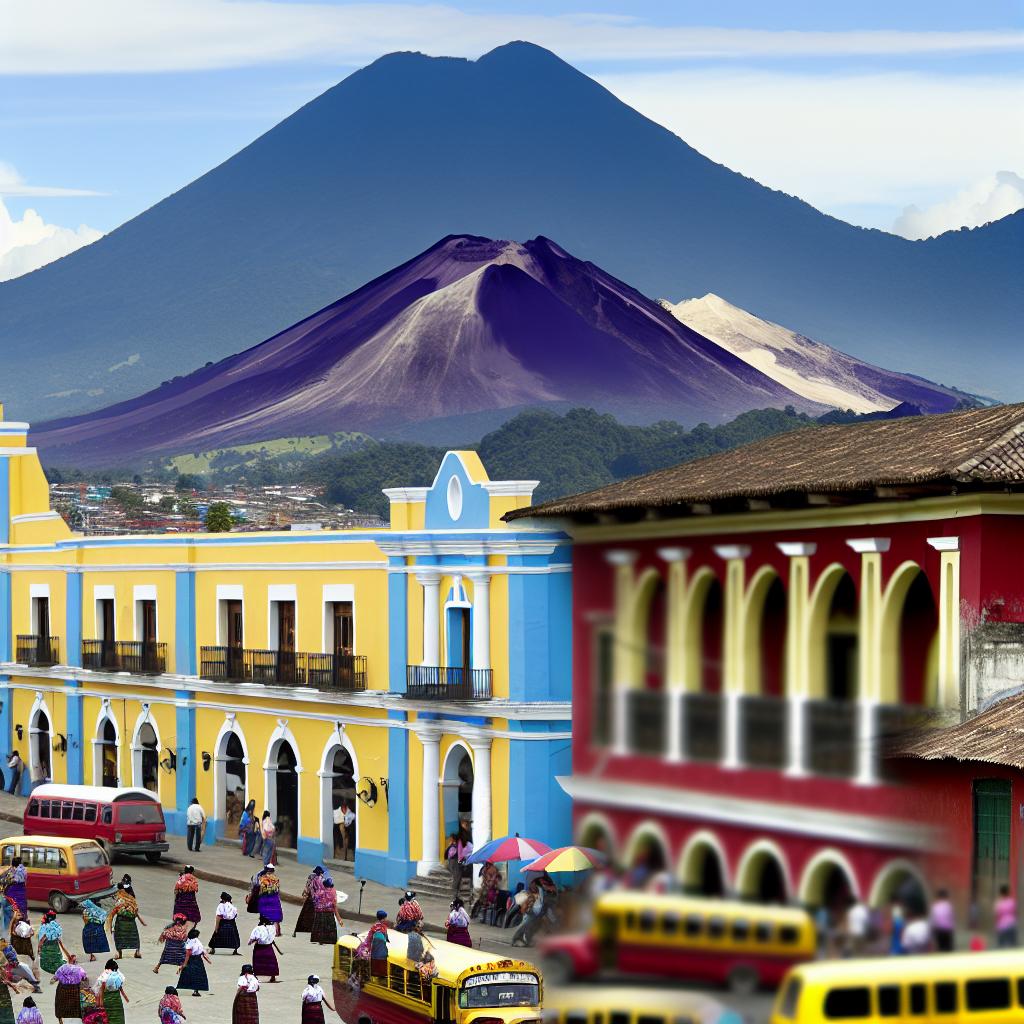Contents
Overview of Quetzaltenango
Quetzaltenango, often referred to by its indigenous name Xela, is the second-largest city in Guatemala. Situated in the country’s western highlands, Quetzaltenango serves as a vital cultural, economic, and educational hub. The city combines a rich history with modern-day progress, offering a unique experience for locals and visitors alike.
Geography and Climate
Located at an altitude of approximately 2,330 meters (7,640 feet) above sea level, Quetzaltenango enjoys a temperate climate. The weather is characterized by mild temperatures year-round, with a more significant distinction between wet and dry seasons. This pleasant climate contributes to the region’s vibrant agricultural production, which includes crops like coffee, corn, and various vegetables. The highland location not only influences the climate but adds to the city’s scenic beauty, nestled among mountains and volcanoes that invite exploration and adventure.
Historical Background
Quetzaltenango’s history dates back to pre-Columbian times. It was originally a settlement of the Mam Maya before coming under Spanish control in the 16th century. The city’s integration into the Spanish colonial framework marked significant changes yet preserved much of its indigenous and colonial identity. Walking through Quetzaltenango, visitors can admire its well-preserved colonial-era architecture, particularly around the central plaza, making it a significant attraction for those interested in historical architecture and colonial history. The remnants of the Spanish influence are evident, coexisting with native traditions and structures.
Cultural Significance
Quetzaltenango is a vital center of indigenous culture in Guatemala. The city is home to various indigenous communities, including the K’iche’, Mam, and Quiché people, each contributing to the area’s vibrant traditions, languages, and customs. Local markets abound with handmade textiles, crafts, and other goods that reflect the region’s cultural diversity. Festivals and ceremonies celebrate this diversity, offering a window into the harmonious cohabitation of different cultural legacies. The city is also a center for learning indigenous languages and offers various programs to promote the cultural heritage.
Economic Development
As a significant economic center in Guatemala, Quetzaltenango boasts a diverse economy with industries ranging from agriculture to education and commerce. Agriculture continues to play a crucial role, with locally grown coffee recognized nationally and internationally. The city’s educational institutions, including universities and technical schools, attract students from around the country, contributing to the intellectual and professional landscape. This influx of students and professionals drives innovation and entrepreneurial spirit in various sectors, establishing Quetzaltenango as a forefront in Guatemalan economic advancement.
For more information, you can visit the official website of Quetzaltenango.
Tourism and Attractions
Quetzaltenango offers various tourist attractions, including the neoclassical buildings in the City Center, hot springs surrounding the city, and picturesque hiking trails in the nearby mountains, such as Cerro El Baúl and Santa Maria Volcano. These natural and architectural attractions provide a deep dive into the harmonious blend of modern life and traditional culture. With abundant opportunities for ecotourism and cultural tourism, visitors can engage in hiking, exploration of markets, and understanding indigenous cultures, making it a memorable destination. Additional travel guides can be found at Visit Guatemala.
Impact of Earthquakes
Sitting in a seismically active region, Quetzaltenango has been affected significantly by earthquakes throughout its history. These natural events have shaped the urban landscape and affected the local community. The 1902 earthquake, one of the most devastating in the country’s history, caused substantial damage, prompting reconstruction efforts that have contributed to the city’s current architectural makeup. In response to these challenges, Quetzaltenango has implemented disaster preparedness and resilience strategies aimed at mitigating the effects of future seismic activities.
Efforts have been made to improve building infrastructure to better withstand the forces of nature, incorporating advanced engineering practices while respecting the historical integrity of its architectural heritage. Community awareness programs have been initiated to enhance local preparedness. These provide crucial information on measures to take during an earthquake, ensuring safety and minimizing damage. The resilience and adaptability of Quetzaltenango exemplify the community spirit and determination to overcome natural adversities.
Quetzaltenango, with its unique blend of rich history, vibrant culture, and economic vitality amidst geological challenges, continues to hold an essential place in Guatemala’s national tapestry. Its story is one of an ever-evolving city that maintains deep-rooted traditions while embracing progress and resilience. Through conservation efforts, cultural celebrations, and economic initiatives, Quetzaltenango represents a living, thriving testament to the diverse and colorful history of Guatemala.
